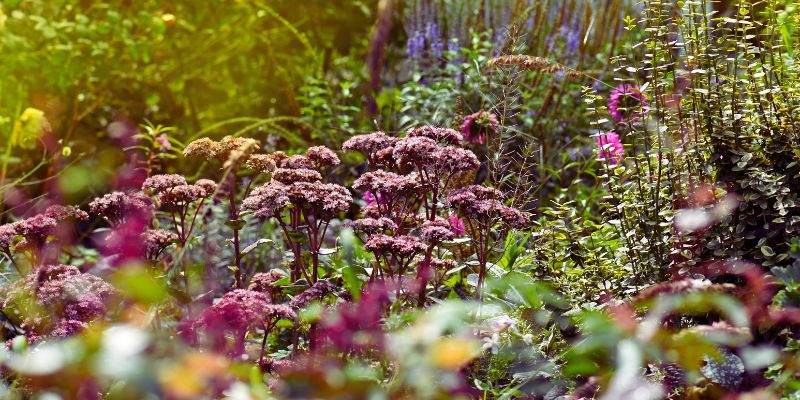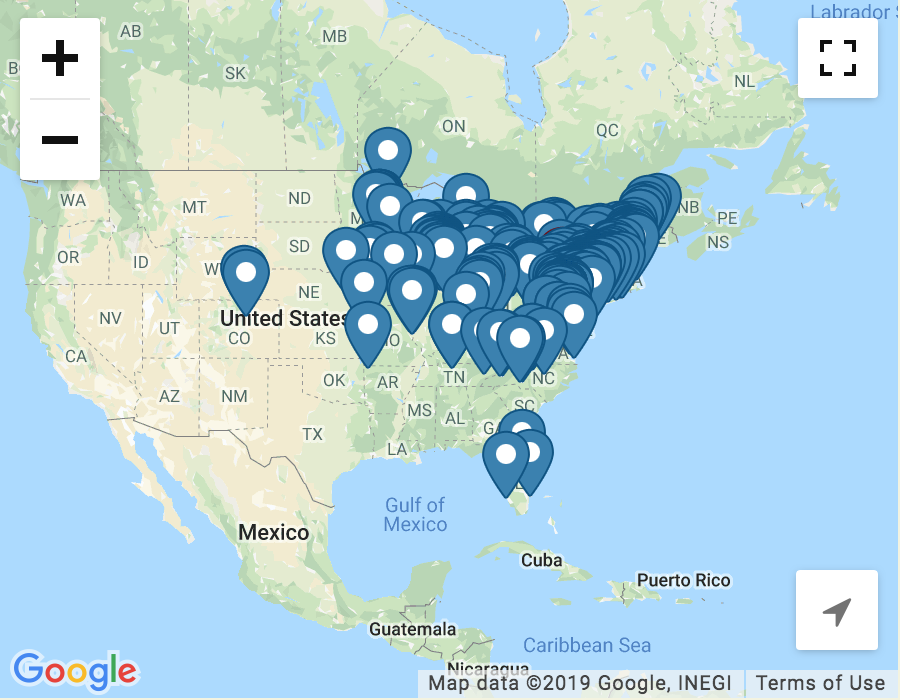You may be mentally winding down your gardening season, but there is no hard stop to what’s happening in nature. The pollinators travelling to their winter homes need food and shelter on their journey, and fall-blooming perennials are a necessity for them.
Nothing blooming in your garden beyond August? No problem. This month is a perfect time to visit your local garden center to pick up fall-blooming perennials that will support bees, butterflies and other pollinators well into fall. Bonus—these beauties add much-needed late-season color to your landscape as summer’s flowers finish for the season.
Six Fall-Blooming Pollinator-Friendly Perennials
The following list will make your trip to the local garden center in search of fall-blooming perennials easier for you. The plants you’re looking for may not be in bloom when you’re scanning the benches and therefore might not catch your eye. Look for the following plant names and you’ll be guaranteed some flowers just in time for fall!
Asters (Symphyotrichum spp.). The poster child for fall-blooming perennials, you’ll find several varieties of asters available to you. The most common are purples and blues, but they also have pinkish and white flowers, too. With more than 100 species in the Symphyotrichum genus, many of the varieties derive from the native New England and New York asters, which are especially attractive to native bees and migrating monarchs. Popular varieties include ‘Wood’s Pink’ and ‘Purple Dome’.
Tip: Cut back by a third in early summer to keep plants compact and encourage more blooms in fall.
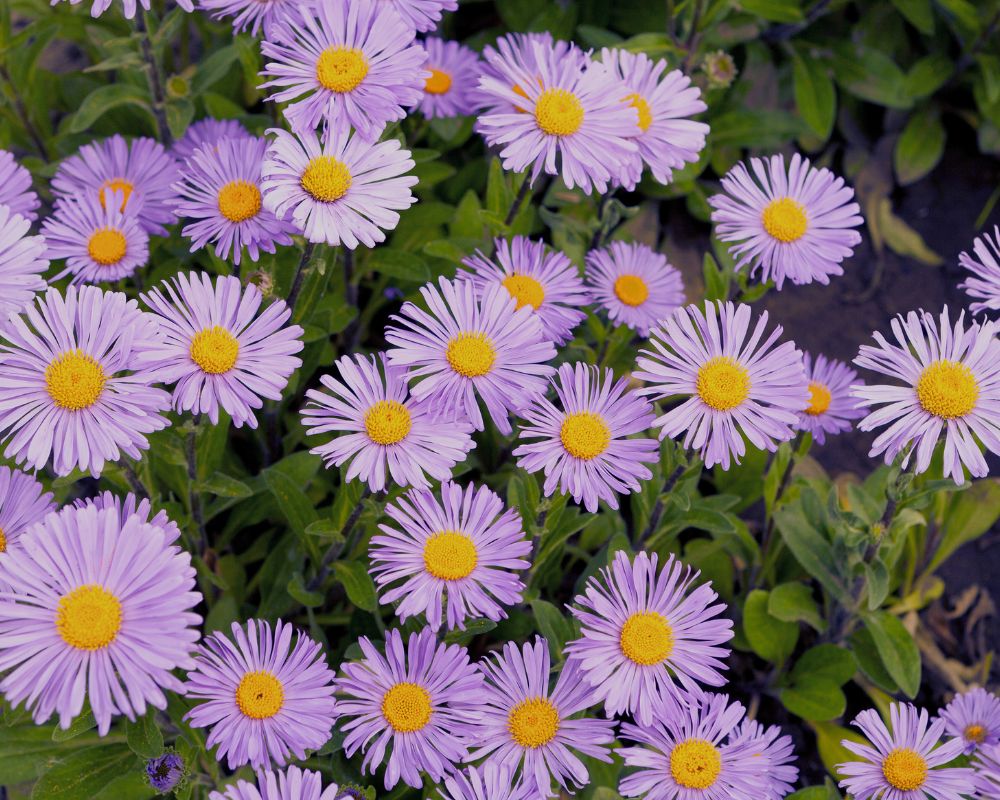
Goldenrod (Solidago spp.)
If asters are the poster child, goldenrod is (mistakenly) on the Most Wanted list, as it takes the blame for seasonal allergies (ragweed is the real culprit). Its golden spikes bloom like gangbusters in fall and attract bees, wasps, beetles, ants, butterflies … pretty much all of ‘em! Popular varieties include ‘Fireworks’ and the dwarf ‘Golden Fleece’.
Tip: Choose clumping varieties such as ‘Fireworks’ to avoid aggressive spreading.

Sedum or Stone Crop (Hylotelephium spectabile). While not a native to North America (it originates from China and Korea), sedum has been a respectable perennial in our gardens for well over a century. Nectar-filled flower heads start to bloom in late summer and continue well into fall. Bees, butterflies and hoverflies appreciate sedum’s easy-to-land-on flat umbels. Try the dark purple-leaved variety ‘Purple Emperor’ for something different.
Tip: This is an excellent plant for water-restricted gardens!
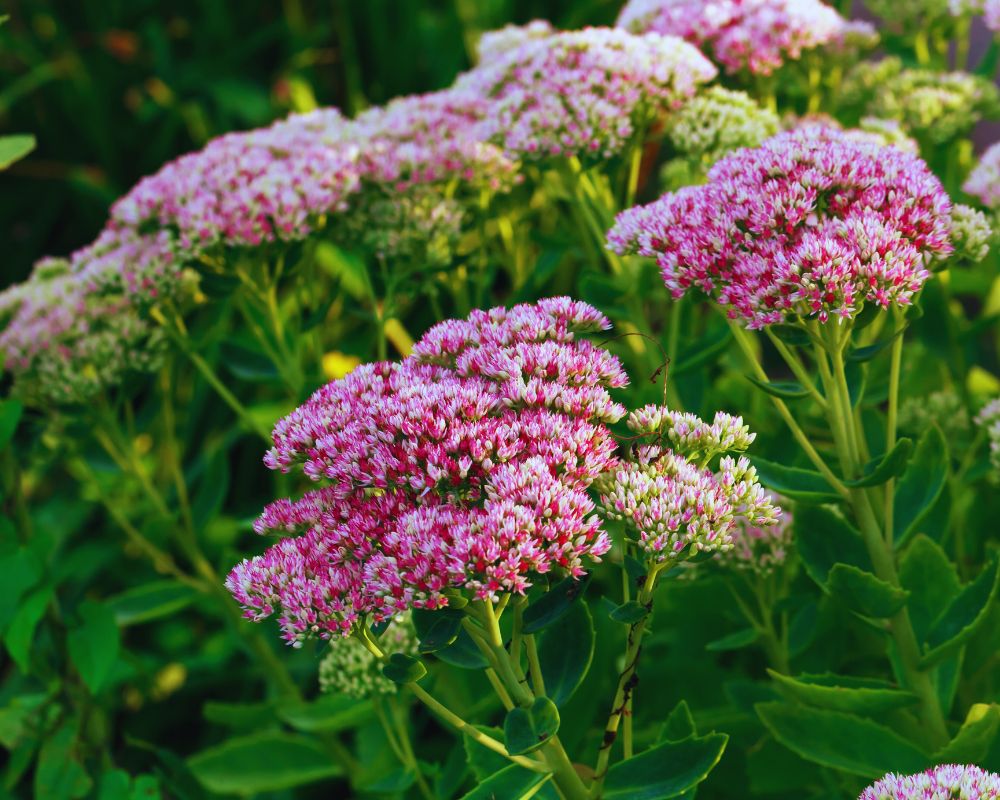
Anise Hyssop (Agastache foeniculum). Also known as hummingbird mint (and a clue as to what pollinators visit), Agastache is actually a midsummer bloomer that continues to push out flowers through fall. Its spiky blooms now come in a wide range of colors, from purple and pink to apricot and coral. Other than hummers, bees and butterflies adore this plant. Bonus: Its leaves are quite fragrant!
Tip: Deadhead to encourage extended blooming.
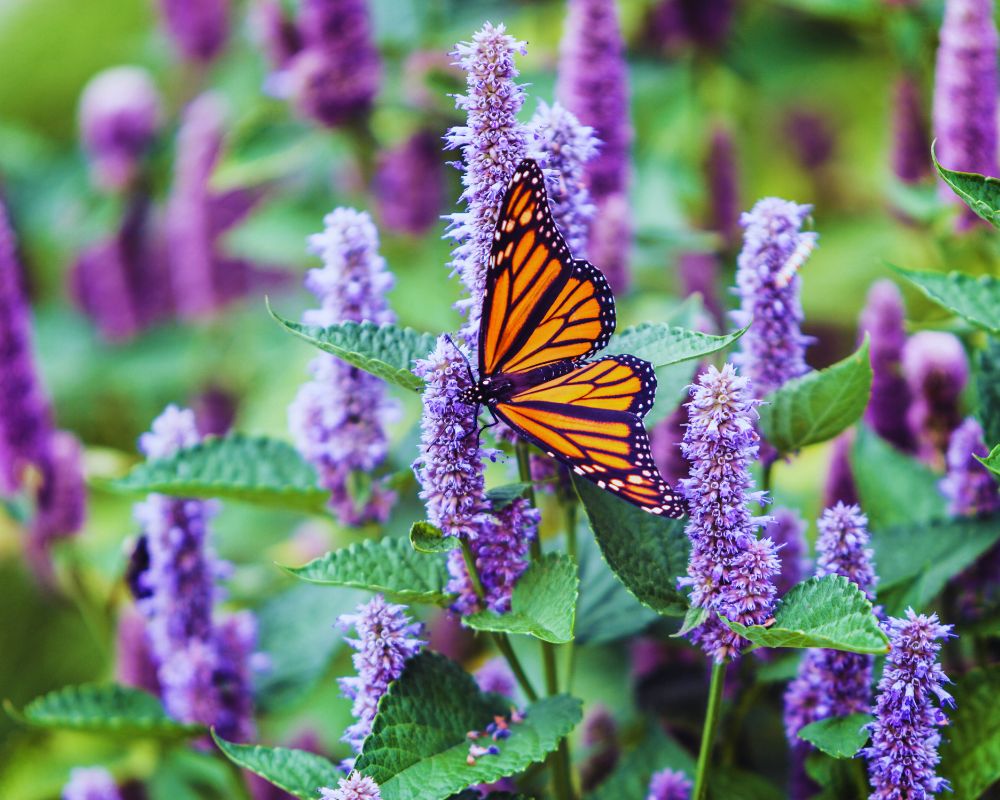
Rudbeckia (Rudbeckia spp.). Also known as black-eyed Susan, this reliable flower blooms from mid-summer into fall and attracts butterflies and bees. Commonly known for its yellow-petalled forms, it also comes in burnt orange, red and a variety of multi-colored petals. Look for varieties such as ‘Indian Summer’, ‘Moreno’, and ‘Cherry Brandy’.
Tip: Divide clumps every 3–4 years to keep them vigorous.
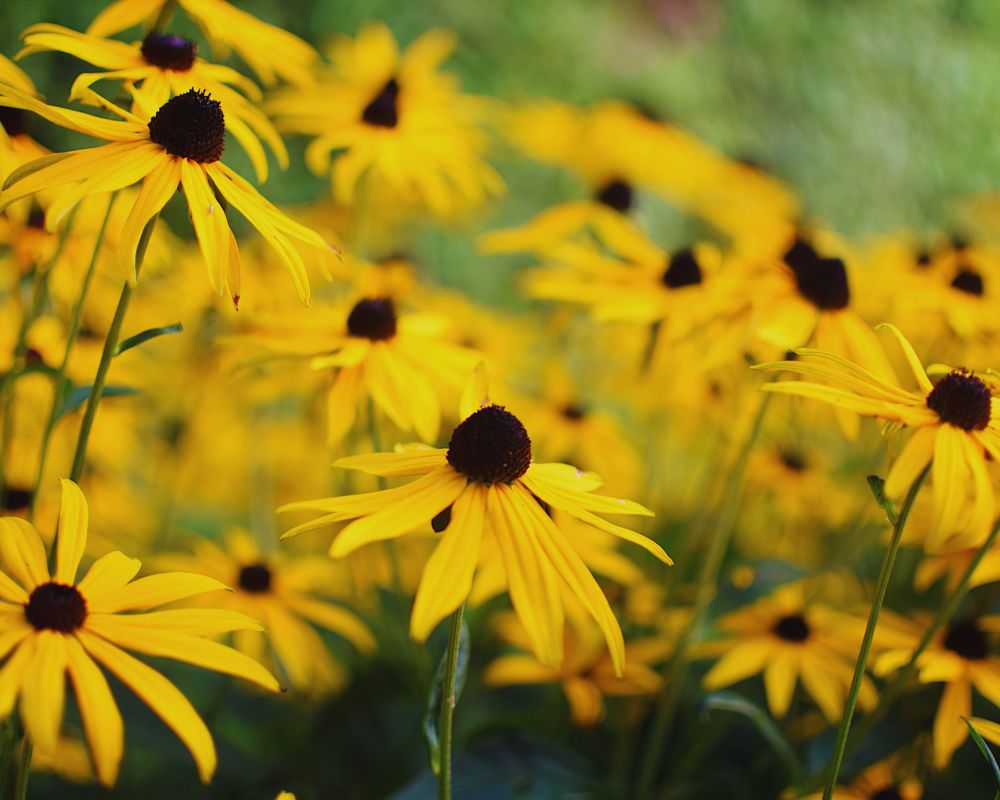
Joe Pye Weed (Eutrochium purpureum). Maybe one of the most underutilized fall-blooming perennials, Joe Pye’s tall stems and mauve flower heads are the perfect rest-and-refuel locations for pollinators. It’s a favorite of butterflies and bumblebees, and looks especially lovely in naturalistic plantings. Try ‘Baby Joe’ and ‘Little Joe’ for plants that will grow more than 4-ft. tall.
Tip: Tolerates wet soil and is great for lining ponds and low areas that remain moist.
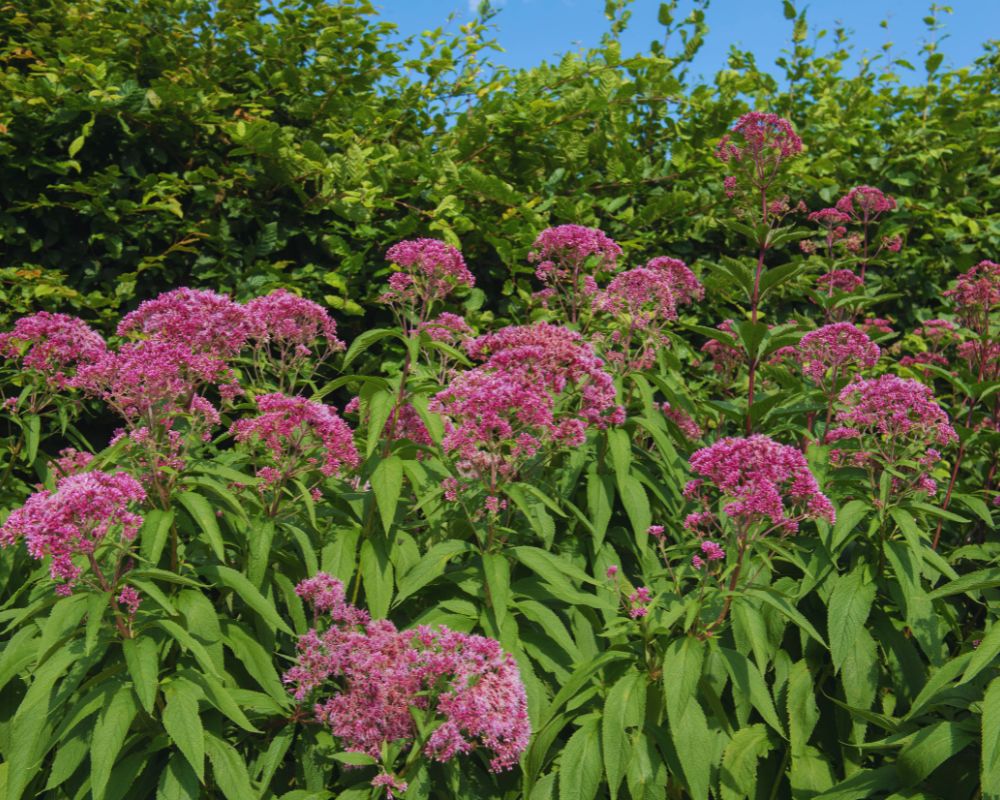
Planting Fall-Blooming Perennials in August
The August garden can be hot and dry. If you want to get these perennials in the ground this month so they can be of service to fall-migrating pollinators, consider the following:
- Soil can be hard and compact by this time of year. Loosen the soil as you dig your planting hole. Add in a compost-rich mix such as Organic Mechanics Planting Mix Compost Blend. Its formulation of compost, pine bark, coir, and earthworm castings add organic matter and helps retain moisture, giving roots a nurturing space to grow and establish before winter.
- It’s a dry month! Be sure to water deeply when the plant goes in the ground, then water consistently for the next several weeks. A 2- to 3-in. layer of mulch will help retain moisture and keep soil temperatures even.
- Skip the high-nitrogen fertilizers when planting in late summer. Nitrogen promotes soft growth that may not harden off before frost. Instead, use a balanced, low-nitrogen fertilizer—or just wait until next spring.
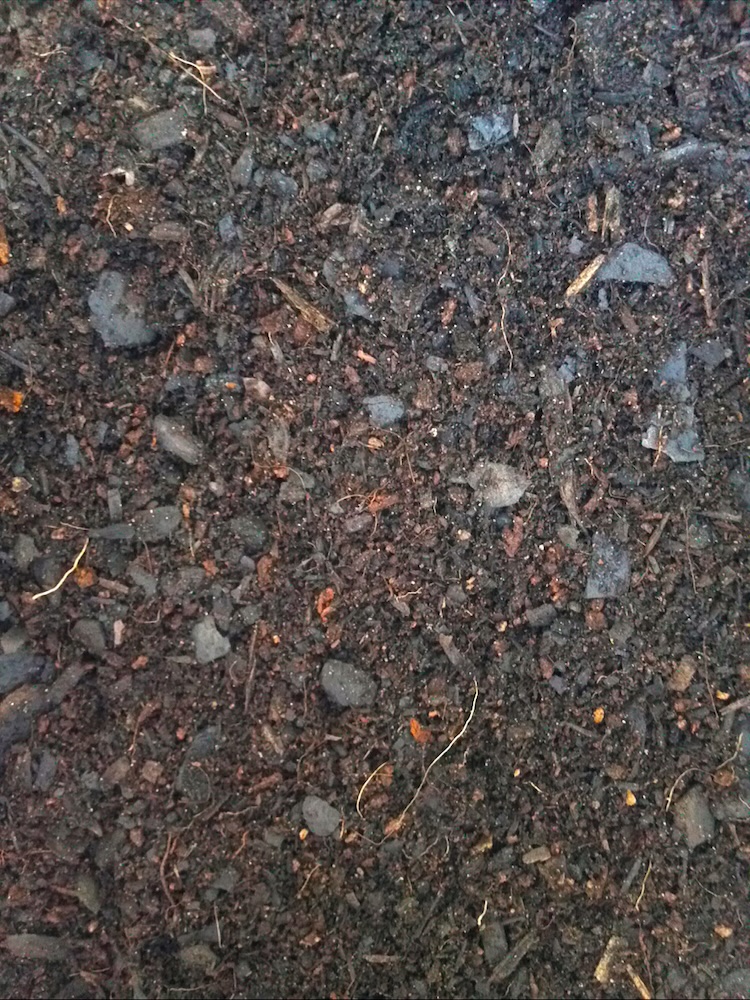
A little hard labor this August will pay off with pollinator visits this fall. It’s well worth the effort!

